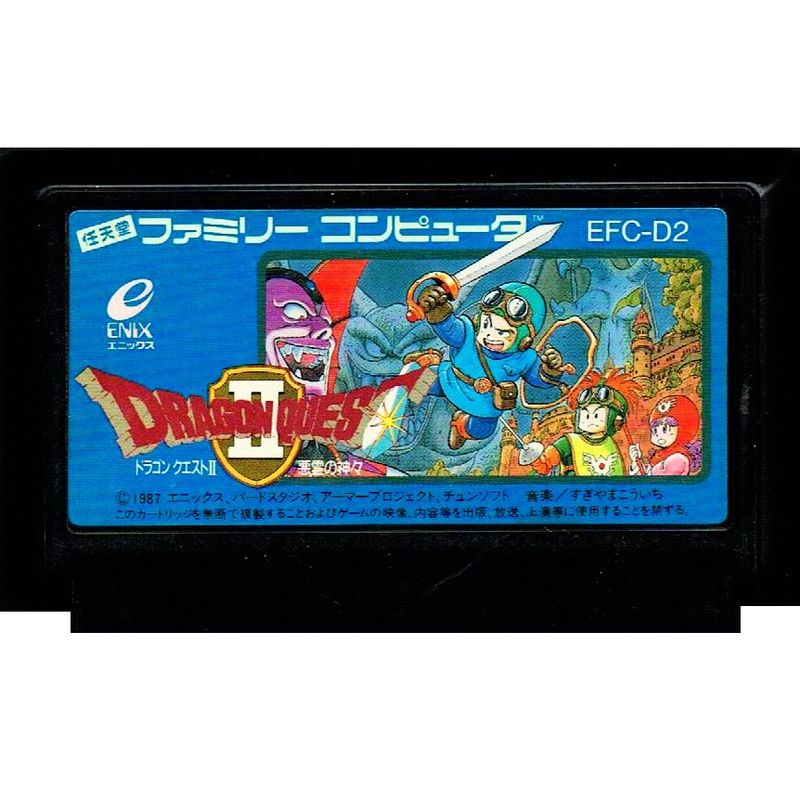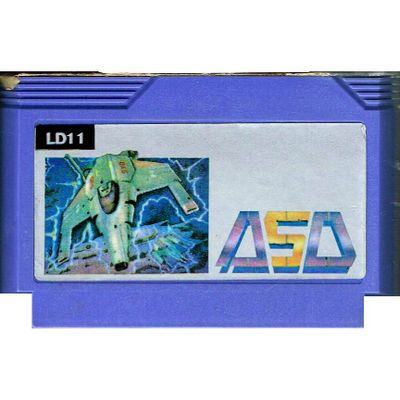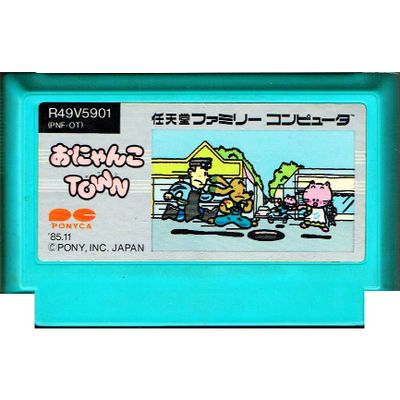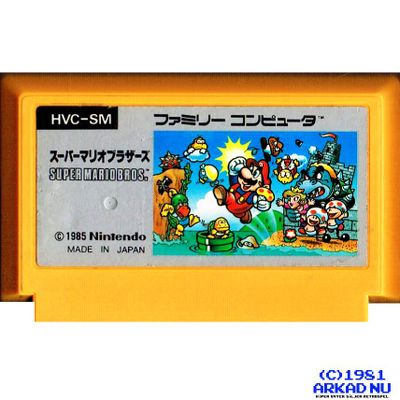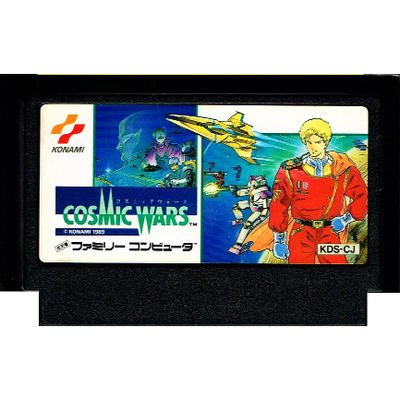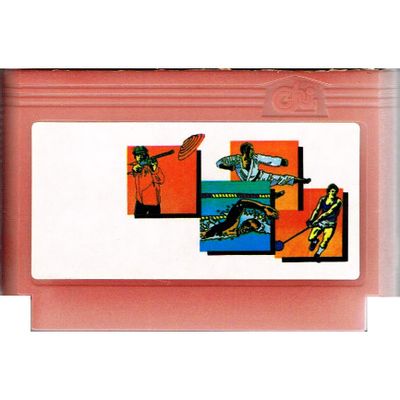DRAGON QUEST II FAMICOM
Liknande produkter
Beskrivning av DRAGON QUEST II FAMICOM
DRAGON QUEST II FAMICOM - EFC-D2 JAPANSK TEXT
FUNGERAR PÅ JAPANSK ELLER REGIONSFRI ENHET
Dragon Quest II: Luminaries of the Legendary Line is a role-playing video game (RPG) developed by Chunsoft and published by Enix (later merging with Square to become Square Enix) in 1987 for the Family Computer (or Famicom) as a part of the Dragon Quest series. Enix's U.S. subsidiary published the American version of Dragon Quest II for the Nintendo Entertainment System (or NES) in 1990. Dragon Quest II is set one hundred years after the events of the first game.
The game's story centers on the prince of Midenhall, who is ordered to stop an evil wizard named Hargon after Hargon destroys Moonbrooke Castle. On his adventure, he is accompanied by his two cousins, the prince of Cannock and the princess of Moonbrooke. Dragon Quest II greatly expands on the series formula from the first game by having a larger party, more areas to explore, multiple heroes and enemies in a battle, and a sailing ship. The game's successor, Dragon Quest III: And Into the Legend..., follows the ancestor of the main characters, the legendary hero Erdrick; and the three games are collectively called "Erdrick Saga Trilogy".
Planning began a month before the original Dragon Quest was released. One major goal was the development of a more exciting combat system, which was inspired by similar multi-character party systems such as the one found in Wizardry. The artwork that was used as the basis for the characters and monsters was painted by Akira Toriyama and then translated into pixel art. The game was hit with delays due to game balance, which were only fully corrected in the early sections of the game. This, combined with a staff that included students not familiar with the coding and debugging process, pushed back the release by a month. The developers also had many ideas that had to be discarded due to the technical limitations of the Famicom system, though some were later incorporated into subsequent remakes and the game's sequel, Dragon Quest III.
Dragon Quest II was successful in Japan; the original Famicom version shipped 2.4 million copies. Later, the game was remade for the Super Famicom and the Game Boy Color and combined with the original Dragon Quest game in a release entitled Dragon Quest I & II. A version of the game for Android and iOS was released in Japan on June 26, 2014 and worldwide on October 9, 2014, as Dragon Quest II: Luminaries of the Legendary Line. The game was praised for improving on almost all aspects of the original, including having better graphics, having a larger world to explore, and more characters to participate in a more dynamic combat system. It was also known as one of the most difficult Dragon Quest games, especially late game, and retained that reputation despite adjustments made when it was ported to other platforms.
Dragon Quest II is a role-playing video game. It allows the player to control more than one character, each of whom has their own characteristics, and it is the first game in the Dragon Quest series to do so. The game introduced a party system where, instead of beginning the game with an entire party as was common in previous computer RPGs, the player begins the game with only one character and gradually recruits more party members during the course of the game. The player controls his or her characters as they move in the game world. They can search treasure chests, talk and trade with villagers, equip themselves with weapons and armor, and cast spells.
While wandering fields, towers, caves, seas, and dungeons, the player randomly encounters monsters, after which the game shifts to battle mode.The game's battle mode introduces groups of monsters, which is an upgrade from the one-on-one battles of Dragon Quest. In the battle mode, the player gives orders to the characters on how to fight the monsters. Once the player defeats all of the monsters, the characters gain experience points and gold. The experience points raise the characters' experience levels. This improves the characters' attributes, and they may also learn new spells.
To win, the player must fight monsters to improve the characters' experience levels and get gold to buy better weapons and armor. Eventually, the player's characters become strong enough to make it to the next town or dungeon. This repeats until the player reaches the final boss and defeats him. However, the gameplay is not necessarily linear, especially after the player gets the boat. Exploration is a key component of the game. The game offers a few spots to save the game.In most of the towns, talking to a king or minister saves the game. In the American version, which incorporated a battery for saved games rather than the password system of the original, talking to the king also allows for the deletion and moving of saved games.
Dragon Quest II is noted for greatly expanding upon the gameplay of the previous game, Dragon Quest.The game is the first in the series to feature multiple heroes and enemies in a battle, as well as a sailing ship. It also allowed the player to land the ship anywhere, making it possible to explore the entire game world in an open-ended manner. It included other new gameplay features such as weapons which cast spells when used in battles. Compared with its predecessor, Dragon Warrior II offers a wider array of spells and items and a much larger world. The game also expanded the inventory management system of its predecessor by giving each character an individual inventory that holds up to eight items, placing a greater emphasis on conservative item management between the characters. Dragon Quest II: Luminaries of the Legendary Line was also the first Dragon Quest game to include a game of chance (played with Lottery Tickets that the player finds), and was also the first Dragon Quest game to use multiple key types and to include travel doors (warp gates).
Dragon Quest II is set one hundred years after Dragon Quest.The story begins with an attack upon Moonbrooke Castle by the wizard Hargon, who seeks to summon the demon Malroth to destroy the world. A wounded soldier escaped the battle and fled to the kingdom of Midenhall, where he informs the king of the attack before he dies. The king then commands his son, who is a descendant of Erdrick (known as Loto in Japanese translations and later localizations), to defeat Hargon.
The Prince begins his quest alone, but is later joined by two cousins: the Prince of Cannock and the Princess of Moonbrooke.After finding the Prince of Cannock, who began a similar journey at the same time as the Prince of Midenhall, they save the Princess of Moonbrooke from Hargon's assault on Moonbrooke Castle, which is reduced to ruins. As the trio quest to find and defeat Hargon, they secure a ship that allows them to travel across oceans to reach new continents, including Alefgard, which is where Dragon Quest took place. There they meet the grandson of Dragonlord, the villain from the previous game, who gives the party valuable information.He tells them that by collecting the five crests hidden around the world, the party can create the Charm of Rubiss, allowing them to defeat Hargon and his illusions. After obtaining the Charm of Rubiss, the party travels to Hargon's castle in the ice-covered plateau of Rhone and confronts Hargon in his throne room. Hargon is defeated, but he offers himself to Malroth and the demon emerges to destroy the heroes. Together, the three heroes slay Malroth and return to Midenhall, where the Prince is named the new king.
ENDAST KASSETT

